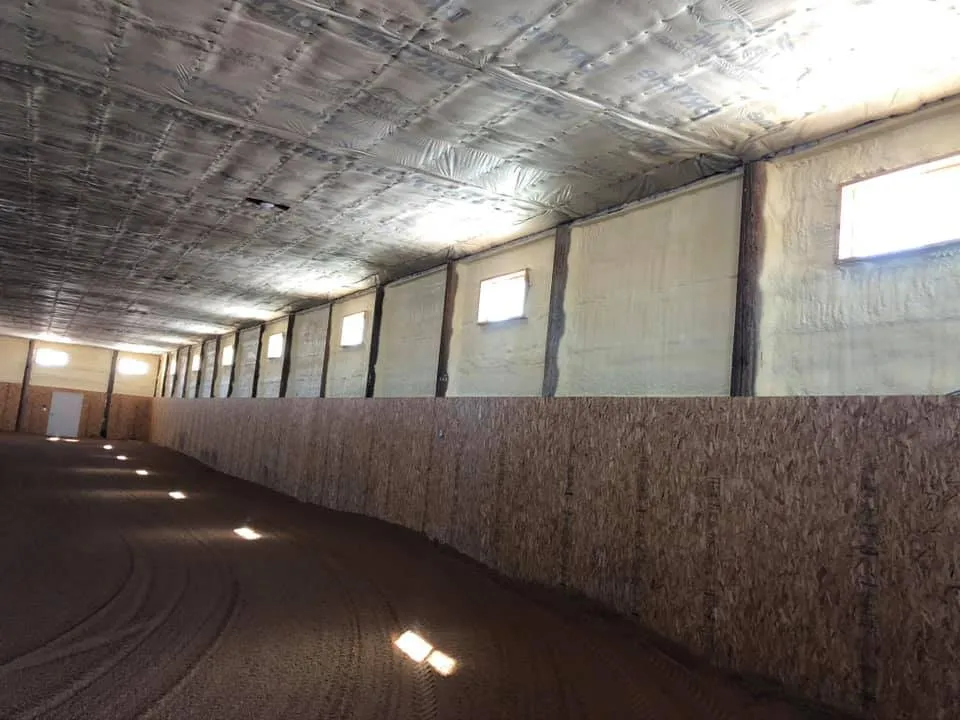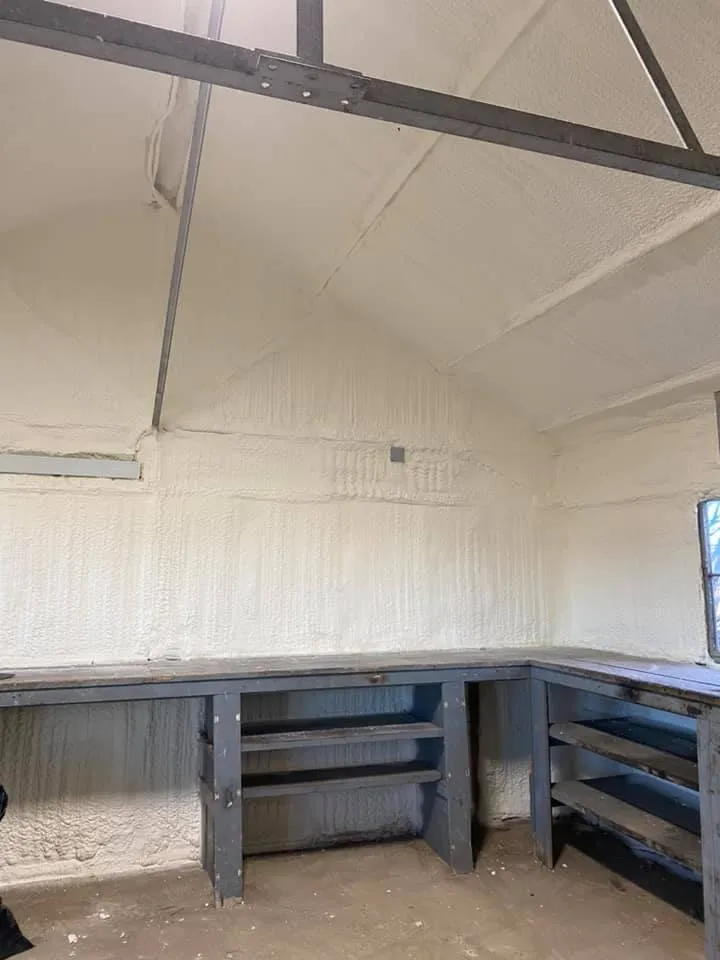

Spray foam insulation stabilizes temperature and moisture levels in crop storage facilities, preventing spoilage and maintaining product quality across all seasons. The insulation creates a continuous barrier that reduces heat transfer, controls humidity, and minimizes condensation risks. This leads to longer shelf life for stored crops and less waste from environmental fluctuations.
The method works effectively in both hot summers and freezing winters. In high temperatures, it reduces heat gain that can cause premature ripening or spoilage. In low temperatures, it retains warmth, preventing freezing damage. These benefits apply across a wide range of agricultural products, from grains and potatoes to fruits and vegetables.
Experience in agricultural insulation projects shows that spray foam performs better than traditional insulation by creating an air-tight seal, which blocks pest infiltration and airborne contaminants.
| Insulation Type | Air Sealing Capability | Thermal Resistance (R-Value per inch) | Moisture Resistance | Pest Barrier | Durability in Agricultural Use |
|---|---|---|---|---|---|
| Open Cell Spray Foam | High | ~3.5 | Moderate | High | 15+ years |
| Closed Cell Spray Foam | Very High | ~6.0 | High | Very High | 25+ years |
| Fiberglass | Low | ~2.9 | Low | Low | 10-15 years |
| Mineral Wool | Moderate | ~3.7 | High | Moderate | 20+ years |
| Blown-In Cellulose | Low | ~3.5 | Low | Low | 10-15 years |
Bonus tip: In high-humidity areas, closed cell spray foam offers superior performance due to its moisture resistance.
| Property | Open Cell Spray Foam | Closed Cell Spray Foam |
|---|---|---|
| Average R-Value per inch | ~3.5 | ~6.0 |
| Water Vapor Permeance | 10-16 perms | <1 perm |
| Typical Application Thickness | 5-8 inches | 2-4 inches |
| Compressive Strength | ~0.5 psi | 25-30 psi |
| Recommended Climate Zones | Mild to moderate | All zones, including extreme cold and heat |
In colder climates, such as Wyoming and Montana, freezing temperatures can damage stored produce. Closed cell spray foam is often selected here for its higher thermal resistance and vapor barrier capabilities. In humid regions, its impermeability to moisture helps prevent mold growth.
Bonus tip: Schedule installation during low-storage periods to minimize operational disruption.

Typically 15-25 years, depending on type and exposure conditions.
Yes, after assessing and preparing the structure.
Not when installed correctly with proper ventilation.
Most projects are completed within a few days.
Yes, it blocks most entry points, but should be combined with other control measures.
Annually, to check for any mechanical damage or exposure from building modifications.
Yes, if the underlying insulation is dry, intact, and free of mold.
No, it is not a food source for pests and helps block their entry points.
Closed cell foam remains stable, while open cell foam may require an added vapor barrier in persistently damp environments.
Yes, damaged areas can be re-foamed after trimming back compromised material.
Spray foam insulation stabilizes temperature and humidity in crop storage, extends product shelf life, and reduces spoilage. Closed cell spray foam offers superior performance in extreme or humid climates, while open cell provides effective thermal control in moderate regions. Correct material selection, application thickness, and integration with ventilation systems are critical to achieving optimal results.
For expert advice on agricultural insulation solutions, contact High Country Solutions at [email protected] or (307) 248-9063. Professional assessment ensures that insulation meets the specific requirements of the crops and climate conditions involved.


